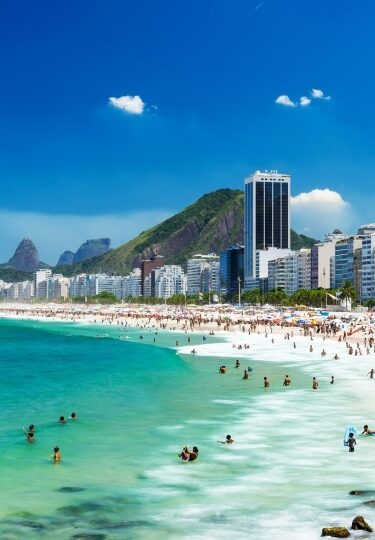South America is a world in one continent. In the space of a single visit, you could be gazing at jagged mountain ranges, arid desert, dense rainforest, rolling wine country, creaking glaciers, steaming volcanoes, and deep fjords.
You’ll find some of the world’s most thrilling, cosmopolitan cities, from glamorous Rio de Janeiro to sophisticated Buenos Aires. In Peru, Lima’s eclectic culinary scene will wow, while edgy Valparaiso, in Chile, has some of the most dazzling street art in the world.
South America is undeniably vast; some 4,700 miles from the north of Colombia to windswept Cape Horn. So choose what you’d like to see and plan your time in each location. With such depth to each country, and such cultural variety, you’ll want to dig as deep as you can.
Here are seven of the best countries in South America to visit.
Argentina
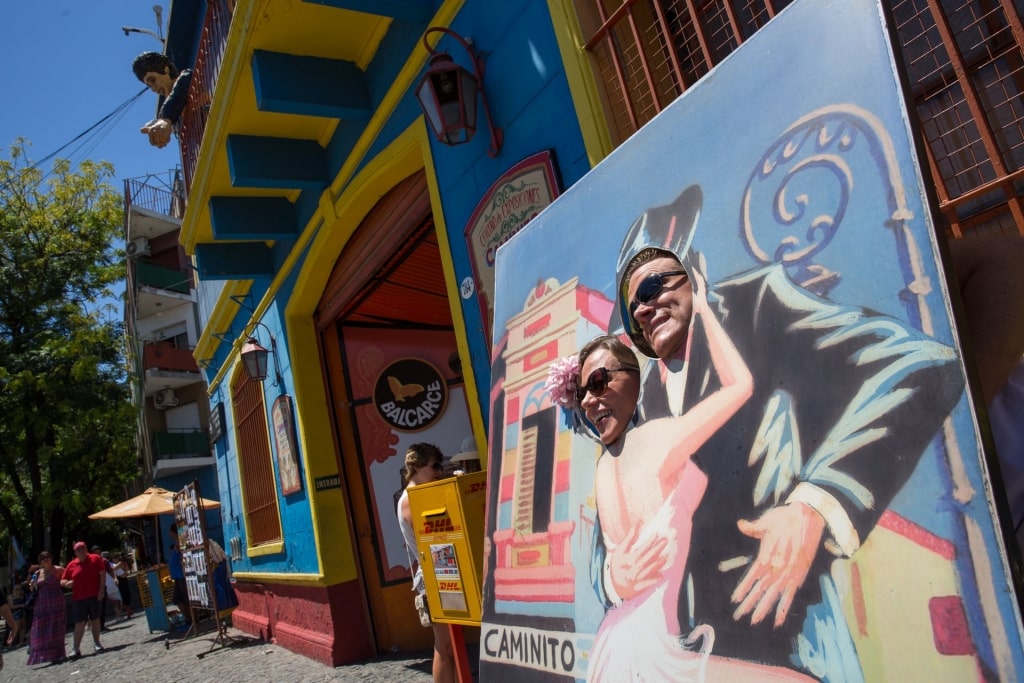
La Boca in Buenos Aires, Argentina
Home of the tango, world-class wines, gaucho tradition, and an enduring passion for fútbol, or soccer, Argentina exudes intensity and extraordinary natural beauty.
Come to Buenos Aires, the capital, for a sultry tango show, a juicy steak, and a hearty Malbec; or for the glamorous polo scene, football at La Bombonera, or the brightly colored buildings of arty La Boca. That’s before you’ve even started on the museums, or the shops along Calle Florida, or gazed at the Casa Rosada on Plaza de Mayo, the pink palace from which Eva “Evita” Peron addressed the masses.
You can see Peron’s tomb in the beautiful Recoleta Cemetery, an unlikely attraction but something of a pilgrimage for many visitors, with its light-filled alleys, marble mausoleums, dusty crypts, and palatial family tombs. Eva Peron’s tomb, the Duarte family mausoleum, is easy to find, thanks to the number of fans paying their respects.
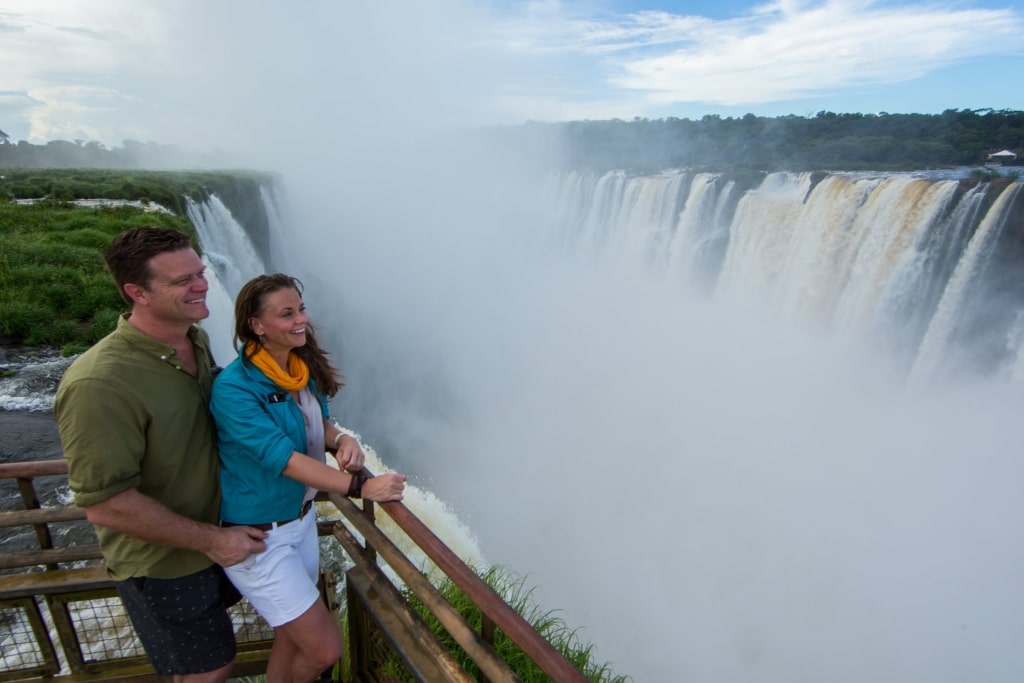
Iguazú Falls, Argentina
If time permits, take a side trip from the fascinating neighborhoods of Buenos Aires to the thundering Iguazú Falls in the rainforest on the border with Brazil. Officially the largest waterfall in the world, Iguazú comprises more than 275 individual cascades. The power of the water, the noise and the sheer spectacle are unforgettable. The wildlife-spotting here is superb, too. Look out for toucans, monkeys and caiman, and maybe even the elusive jaguar.
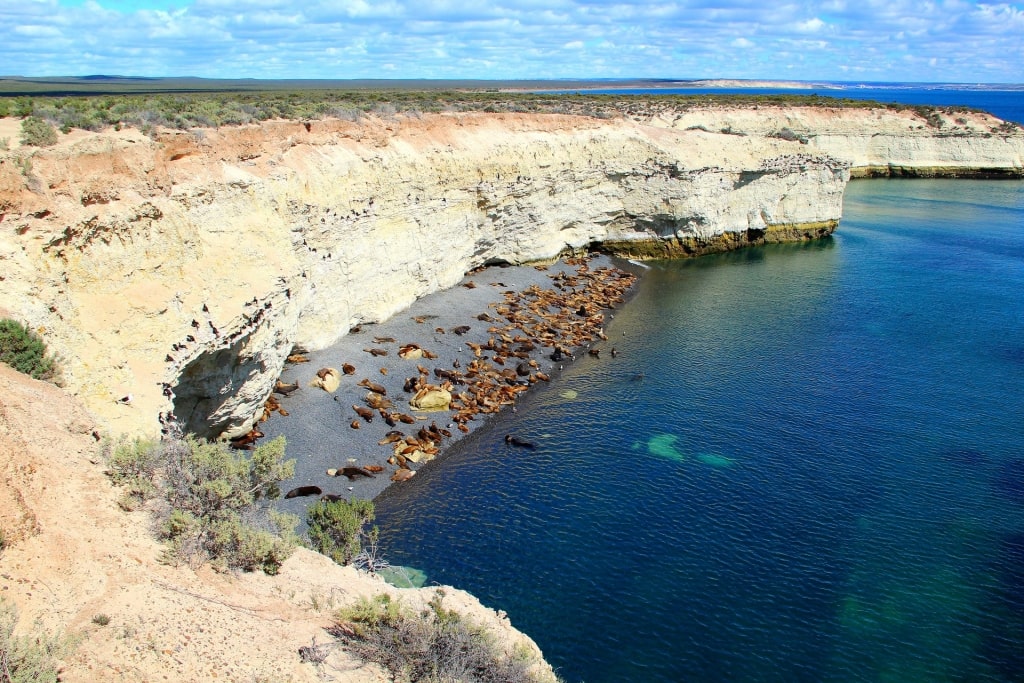
Punta Loma in Patagonia, Argentina
Much further south, at the northern reaches of wild Patagonia, Puerto Madryn is Argentina’s whale-watching capital. In summer, visitors flock here to spot the hundreds of southern right whales that congregate here.
You can learn more about the whales in EcoCentro, a superb interactive museum showcasing the unique marine biology of Patagonia. At low tide, head to the Punta Loma reserve, where you’ll be able to observe seabirds and a large sea lion colony.
There’s a certain thrill to visiting windswept Ushuaia, knowing that you’re in the world’s most southerly city, huddled defiantly at the foot of the snowy Martial Mountains, gazing out at the Beagle Strait. Antarctica is the next landfall, and the vast wilderness of Tierra del Fuego stretches away to the north, east, and west.
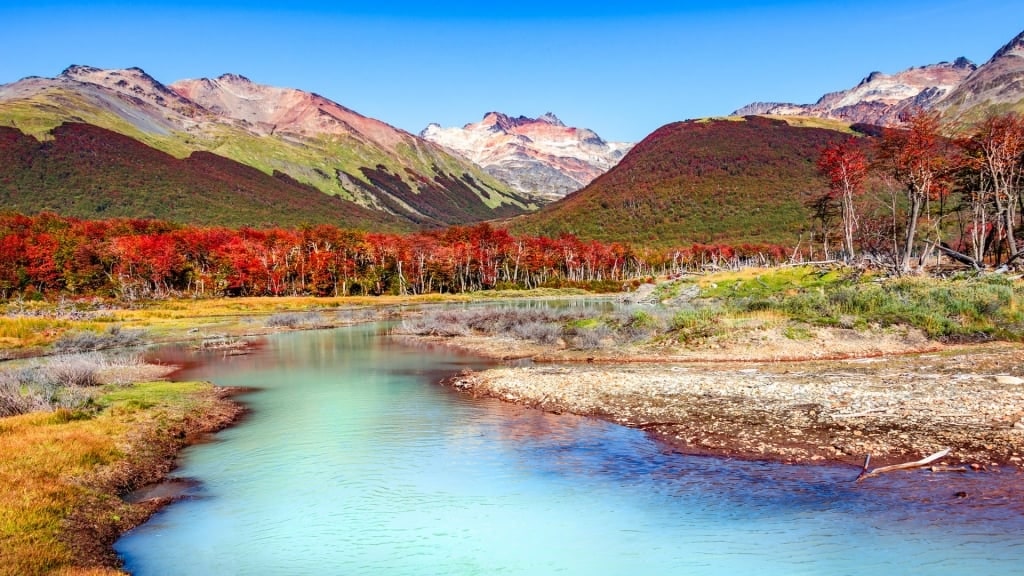
Tierra del Fuego National Park, Argentina
Ride the narrow-gauge End of the World Train, originally used to ferry prisoners to work camps when Ushuaia was a penal colony. Now, this hour-long scenic train ride is one of the best things to do in Ushuaia, passing through forests and the rushing waterfalls of Tierra del Fuego.
Or head out into the Beagle Channel on a day boat, sailing past the distinctive red and white Les Eclaireurs lighthouse to spot sea lions and South American penguins on rocky islands. Back in town, you’ll find cozy pubs and steak houses galore.
Brazil
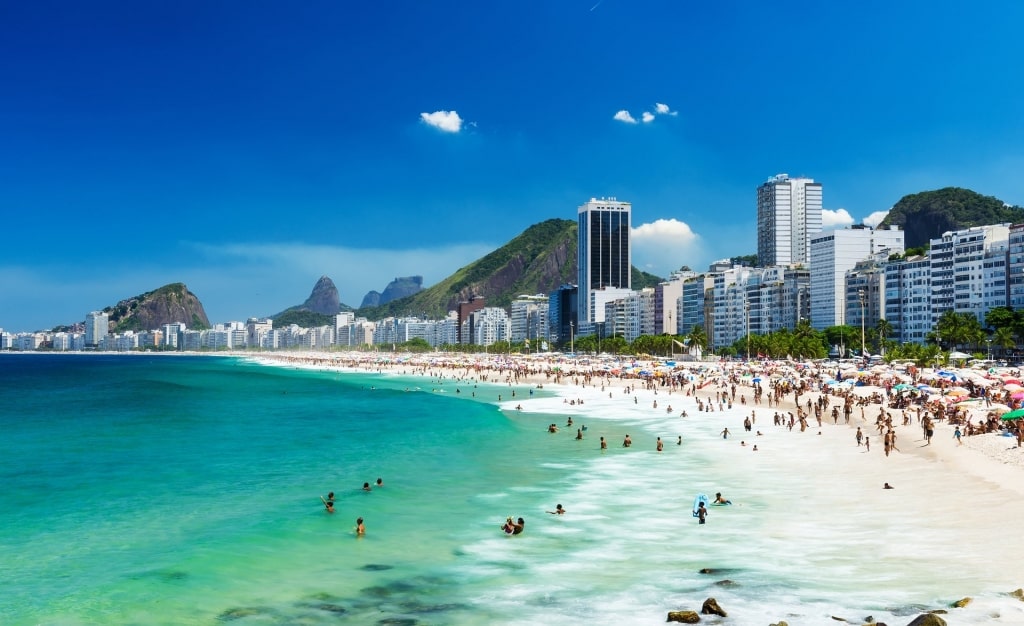
Copacabana Beach in Rio de Janeiro, Brazil
Think of Brazil and the showy beauty of Rio de Janeiro immediately comes to mind. Here, the urban sprawl is punctuated by dramatic sugarloaf spires and framed by long, golden beaches and lush forest. Those beaches, from Ipanema to Copacabana, are every bit as glamorous as their reputation promises, packed with golden-limbed cariocas playing football, volleyball, surfing, and sunbathing.
There’s music everywhere, from samba to bossa nova, funk and tango. Little wonder that Carnaval, which takes place every February, is the greatest festival on Earth. Rio really is one of the best places to travel in South America for its sheer vibrancy.
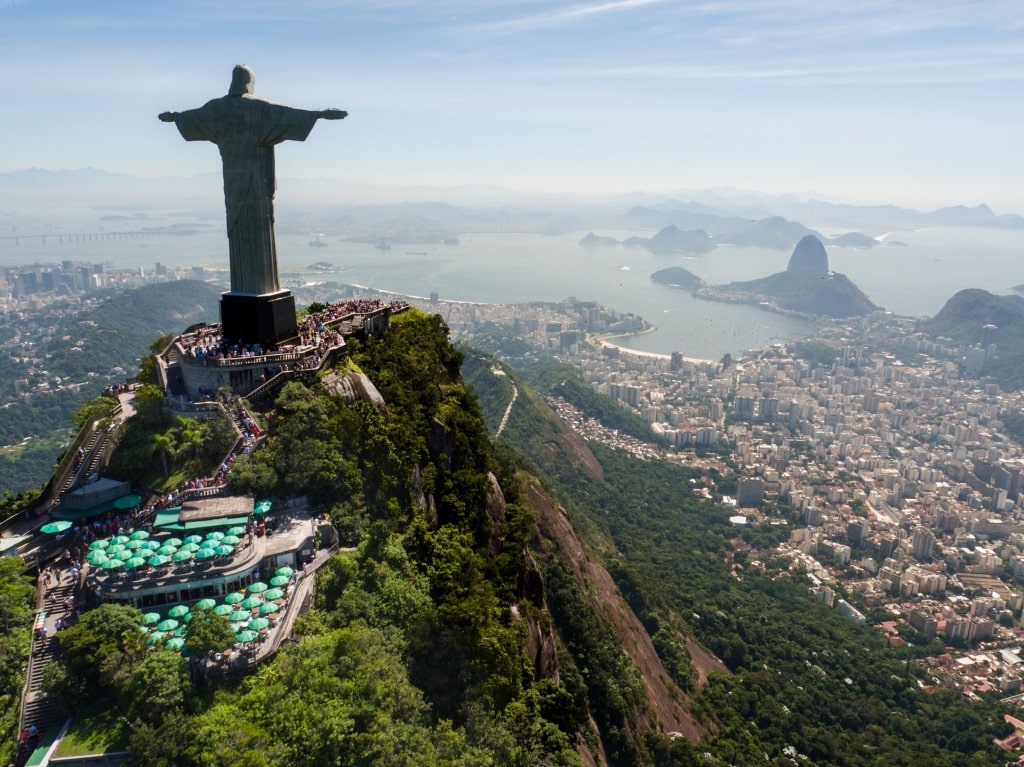
Christ the Redeemer in Rio de Janeiro, Brazil
Don’t miss a chance to head up the 2,329-foot Corcovado, one of the natural landmarks Brazil is known for. Accessible by narrow-gauge train, you’ll get sweeping views of the city and coastline under the open arms of Cristo Redentor, Christ the Redeemer. For views of, rather than from the statue, the two cable cars to the summit of Sugarloaf Mountain offer equally dazzling vistas.
Read: Famous Landmarks in Brazil
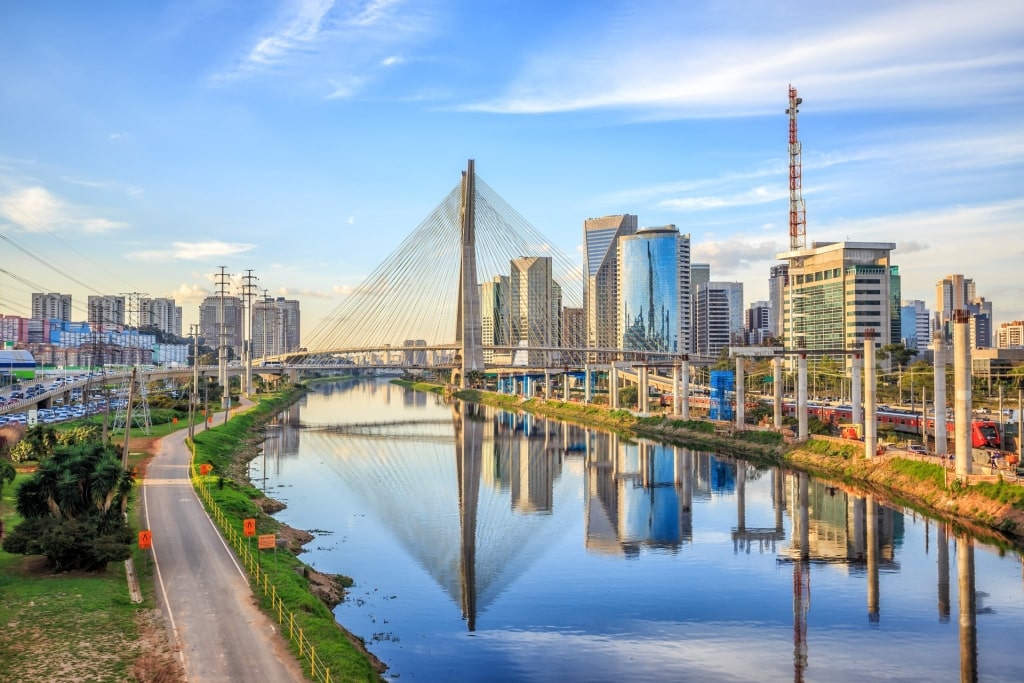
São Paulo, Brazil
Rio often overshadows São Paulo, Brazil’s financial center. Here, you’ll find a vast cluster of soaring skyscrapers with a historic heart, the architecture here the legacy of the original Portuguese settlers.
Visit museums like the Pinacoteca and the Museu de Arte de São Paulo or, if you’re a soccer fan, the Museu do Futebol, for a glimpse into the role soccer plays in the Brazilian psyche.
Salvador, capital of Bahia state, is another sprawling metropolis alive with music, dance, and fine cuisine. Explore the cobbled streets and pastel-colored houses of the 17th-century center and then follow the local example and head for the long, sandy sweep of Porto da Barra Beach.
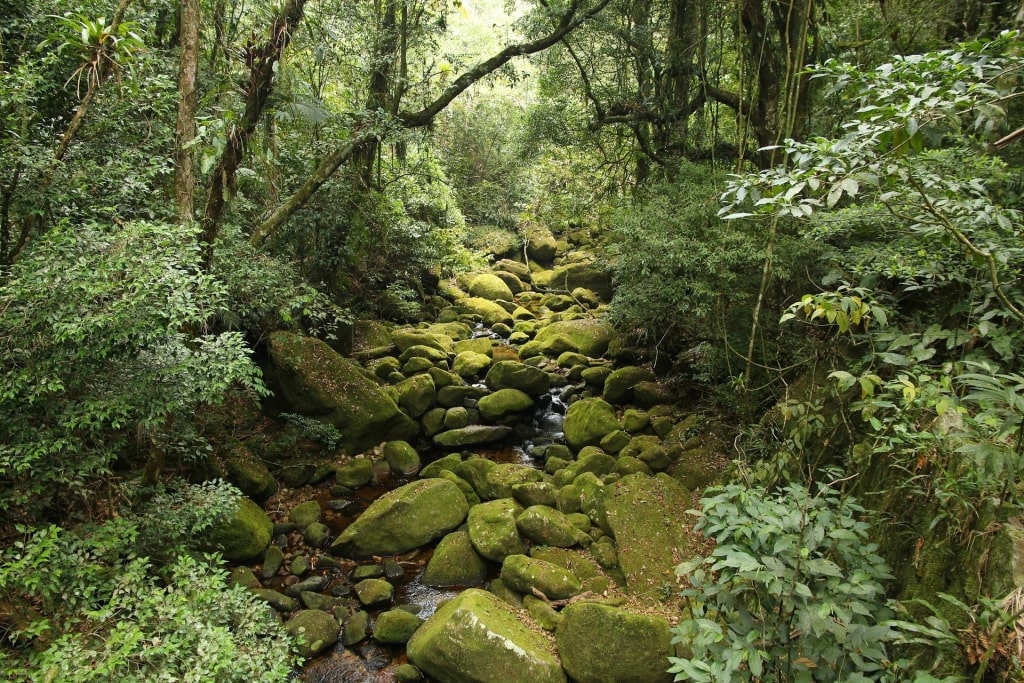
Mata Atlantic Rainforest, Brazil
Of course, beach life is integral to coastal-dwelling Brazilians, and there’s no shortage of choice. From Ilhabela, which means “beautiful island”, you’ll find more than 40 beaches and a landscape of tumbling waterfalls and lush rainforest. There are wrecks littered off the coast, the legacy of 16th and 17th century pirates, so the scuba diving here is superb.
Chile
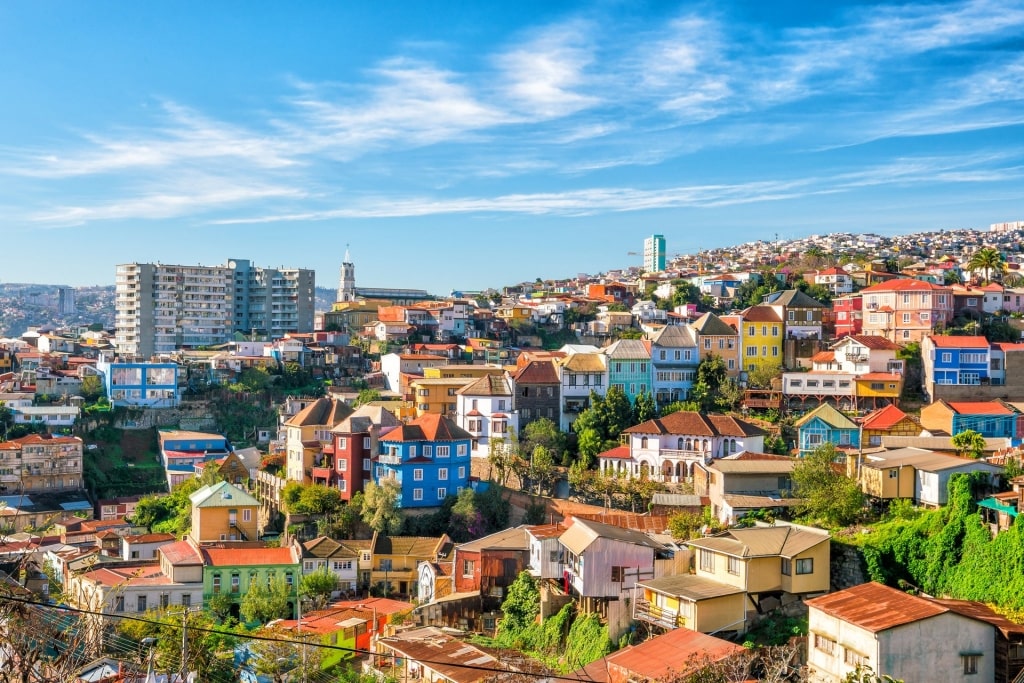
Valparaiso, Chile
Chile’s 2,600-mile top-to-toe span encompasses incredible diversity, from the urban sprawl of Santiago, the capital, to the volcanic drama and shimmering blue waters of the Lake District and the vast skies and rolling plains of Patagonia, to the south.
Extraordinary Valparaiso is a sprawling, vertiginous mishmash of crumbling mansions, creaking funiculars, hippy shops, and some of South America’s most dazzling street art. Sprawling chaotically over a series of hills, the dockyards lining its waterfront, Valparaiso has long attracted poets, writers and artists.
Among them is one of Chile’s most famous sons, Pablo Neruda, whose red and white hilltop house, La Sebastiana, is open to the public, with sweeping views down over the city and waterfront.
Neruda’s house and museum aside, one of the best things to do in Valparaiso to absorb the endlessly surprising city is to walk. Go with a local guide to learn about street art, entire houses painted in brilliant rainbow colors depicting faces, characters, animals, and political statements.
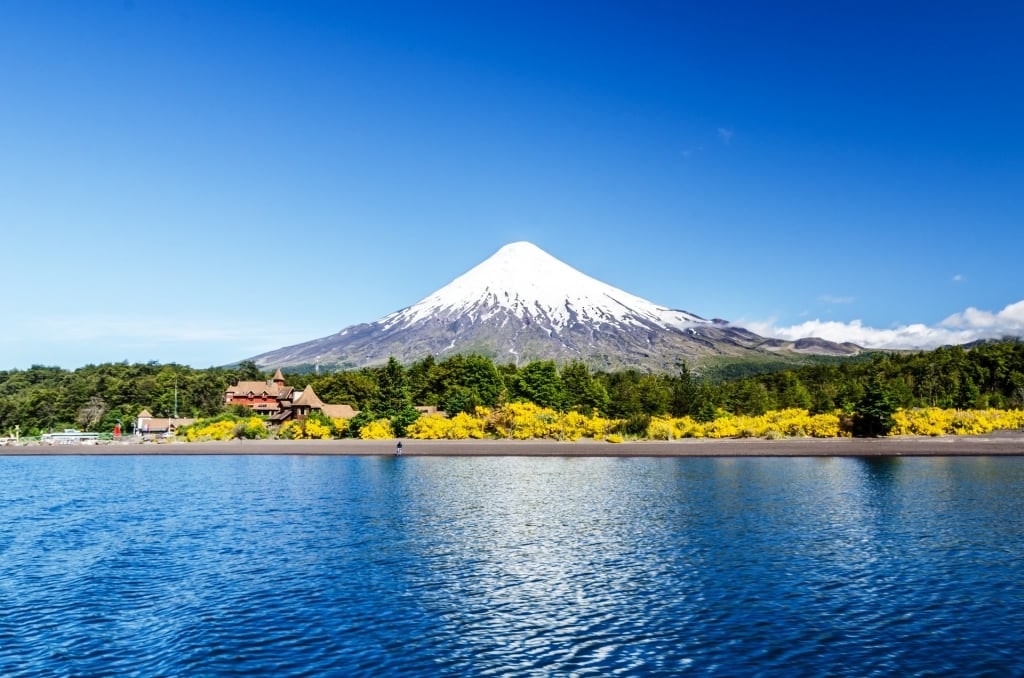
Lake Llanquihue in Puerto Montt, Chile
Further south, glittering lakes, towering volcanoes, and primeval forest characterize Chile’s Lake District. Puerto Montt is the gateway to volcano hikes, rushing waterfalls, lakeside cafés, and cycle trails.
The former German colony of Puerto Varas hugs the southern shore of the cobalt Lake Llanquihue, with a startling backdrop of two massive, snow-capped volcanoes: the 8,700-foot, perfectly conical Osorno; and Calbuco.
At the heart of the town, the distinctive Iglesia del Sagradao Corazón is a near replica of the Marienkirche in Germany’s Black Forest, while cafes, bars, and craft breweries are strung out along the waterfront.
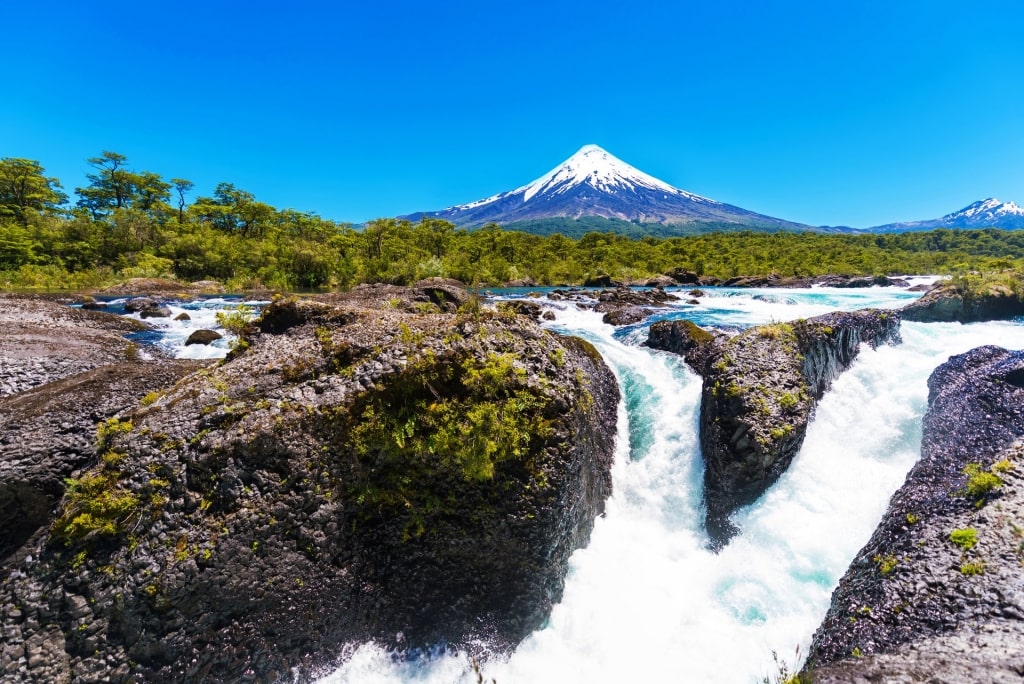
Vicente Pérez Rosales National Park, Chile
Another one of the best things to do in Chile is to take a day trip to the Vicente Pérez Rosales National Park, where the greeny-blue Petrohué River thunders through a narrow lava canyon, surrounded by virgin forest. You can admire the spectacle from wooden walkways, feeling the spray on your face.
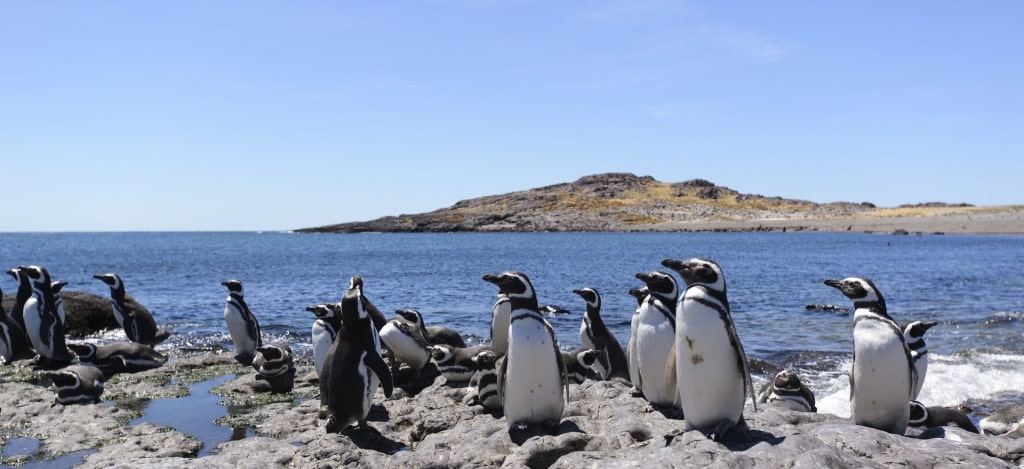
Magellanes National Reserve in Punta Arenas, Chile
As you head towards the very tip of South America, the landscape becomes more extreme and the vegetation hardier. Visit the Magellanes National Reserve from wind-blown Punta Arenas and hike through forests of lichen-draped lenga, trees you’ll only find in this part of the world.
One of the best things to do in Punta Arenas is to take a day trip to Magdalena Island. Here, you’ll be completely surrounded by thousands of Magellanic penguins, bustling about their business, building nests, squabbling, and tending their young. Tie your shoelaces tight; you could well find them being pecked at as something suitable with which to line a nest.
Colombia
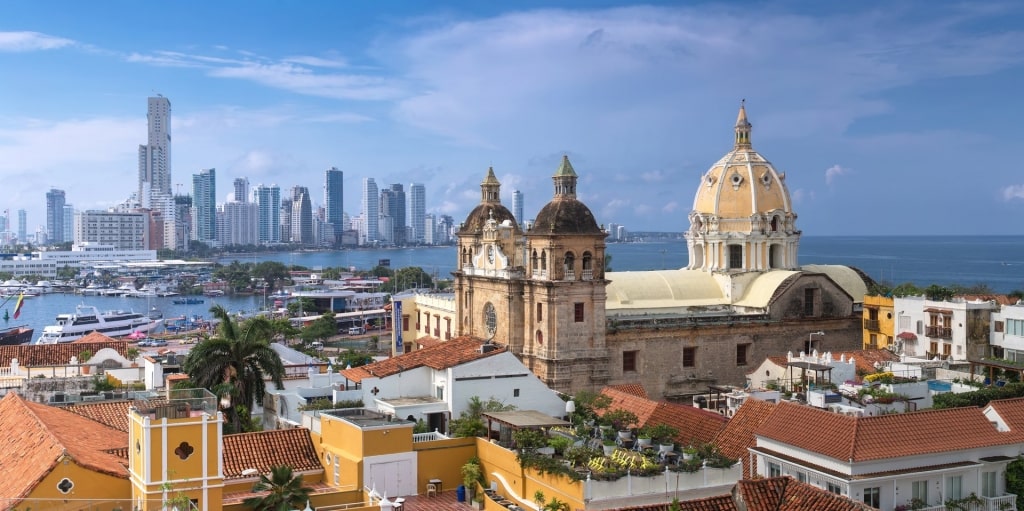
Cartagena, Colombia
The star of Colombia’s long Caribbean coast is without doubt Cartagena. Enveloped by seemingly impenetrable stone walls, this elegant port is a perfectly preserved Spanish colonial town.
Lovely 16th- and 17th-century buildings line the cobbled alleys and shaded squares. There’s vibrant color everywhere, from old facades painted in ochre, terracotta, and bright blue to balconies festooned with purple, red, and white bougainvillea.
The best way to explore is simply to wander around the Old Town, taking in the sights and sounds and popping into the cathedral, having admired its cream and yellow façade and striking terracotta dome.
Plaza de Bolivar is at the center of town, a little park with splashing fountains and a statue of Simon de Bolivar, the liberator of South America, at its center. Also on this square is the grisly Palacio de la Inquisicion, a sinister museum displaying torture implements and witching paraphernalia.
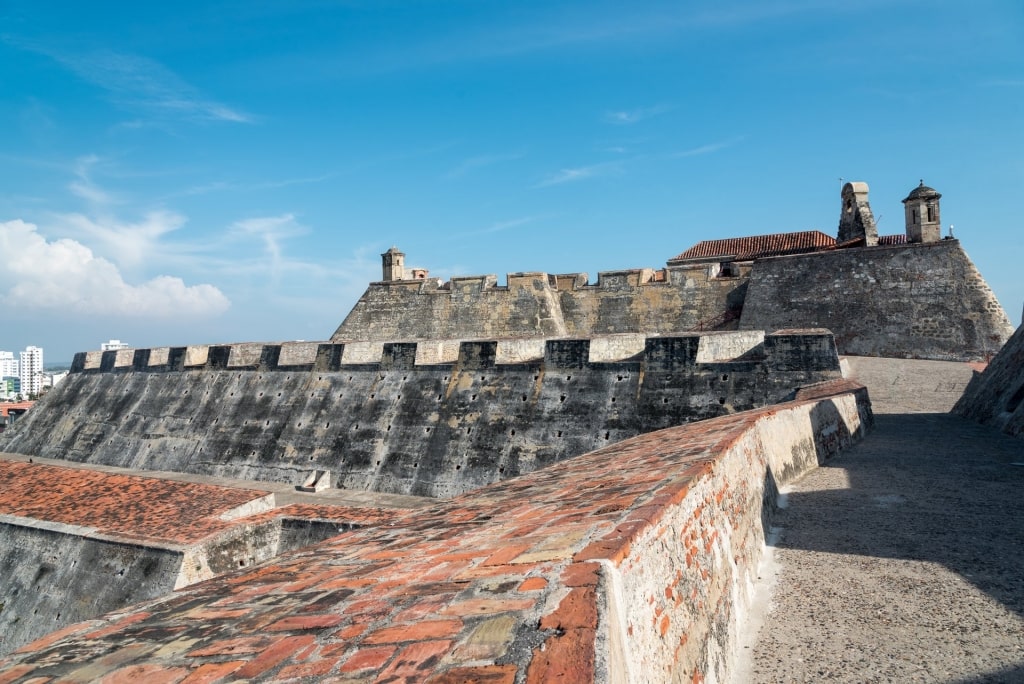
San Felipe de Barajas in Cartagena, Colombia
On a lighter note, Cartagena’s food scene is impressive, from fresh seafood and ceviche to tapas washed down with ice-cold beer. Alternatively, refuel on street food, from buñuelos, fried dough balls, to empanadas, pastries stuffed with spiced meat.
Before you leave, wander around the battlements and tour the underground tunnels of San Felipe de Barajas, the impregnable 17th-century castle that dominates San Lázaro hill.
Peru
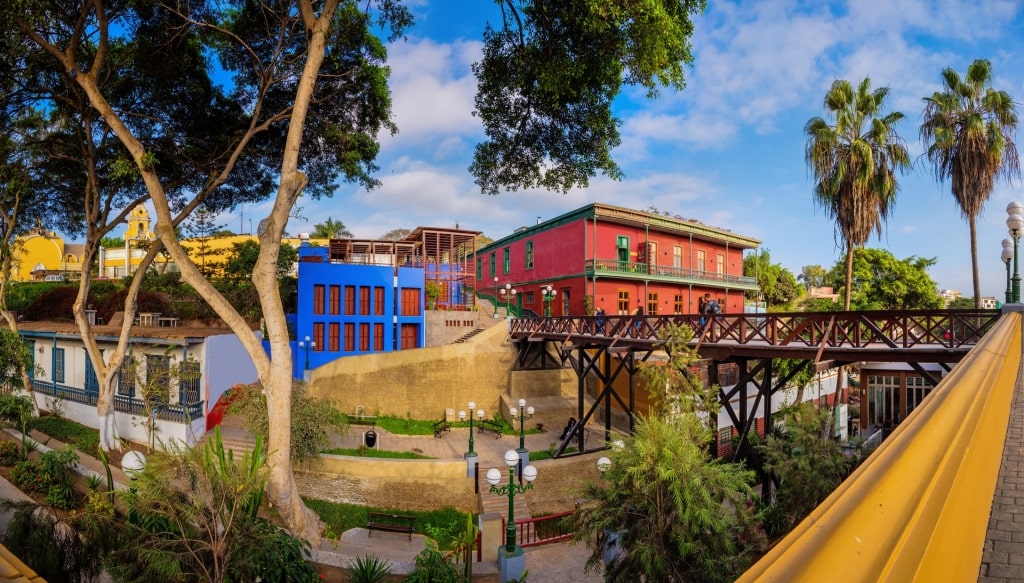
Barranco in Lima, Peru
One of the best countries in South America to visit is Peru, whose architectural and natural treasures are legendary. Your journey will most likely begin in Lima, a vast urban sprawl fringed by long Pacific beaches.
Lima is famed for its creative South American food scene, with many Michelin-starred restaurants to try and adventurous chefs giving a modern twist to traditional Peruvian cuisine. At the very least, you must sample ceviche, made from the freshest of fish, and pisco sour, the tangy national drink.
There’s plenty to see in the city, from the colorful, boho barrio of Barranco to world-class archaeological museums and the pre-Incan pyramid, Huaca Pucllana, now surrounded by the urban area.
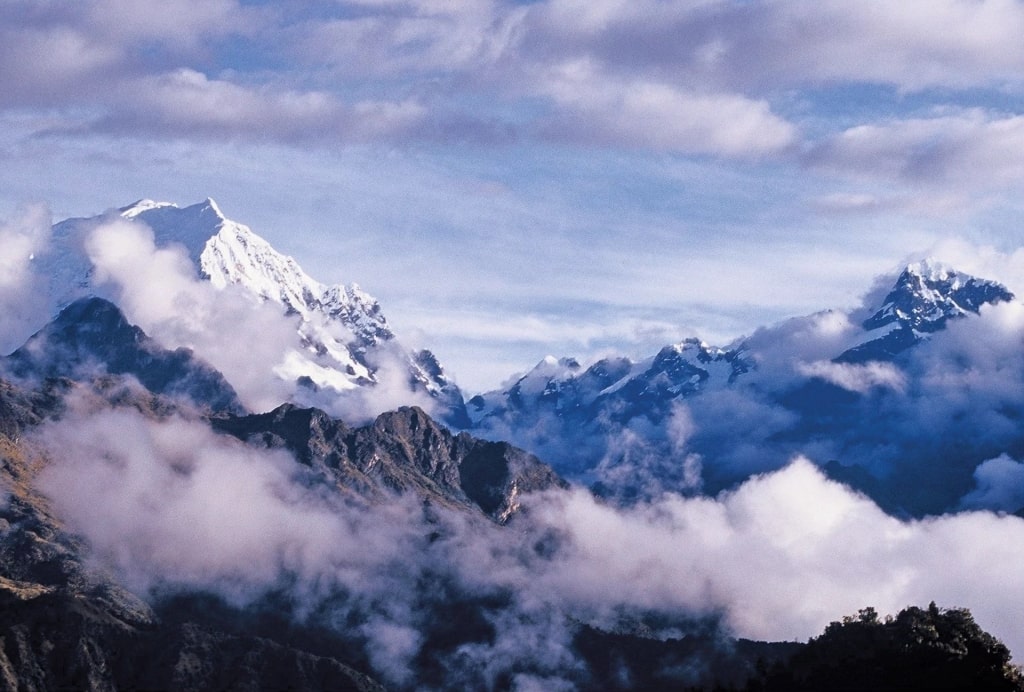
Sacred Valley of the Incas in Cuzco, Peru
For many, Lima is the jumping-off point for journeys into the Andes Mountains, to Cuzco, the Sacred Valley of the Incas and the breathtaking archaeological site of Machu Picchu. A multi-day trip will give you time to adjust to the altitude; Cuzco is a dizzying 11,100 feet above sea level. You’ll want to make the most of its cobbled squares, cathedrals, and Inca antiquities while you’re here.
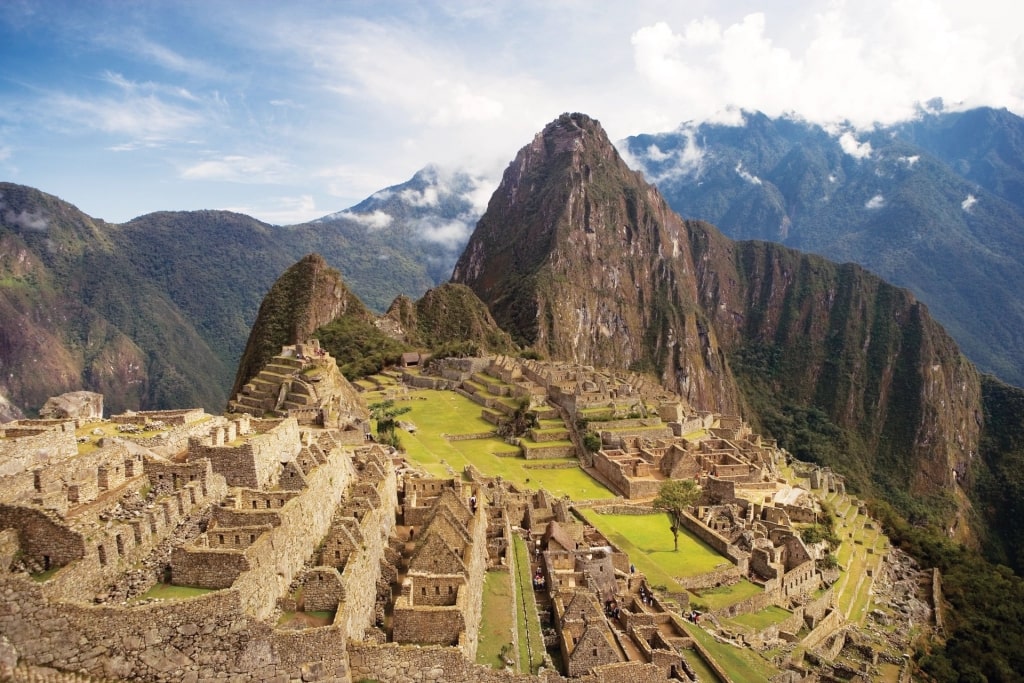
Machu Picchu, Peru
To most visitors, though, the ultimate prize is the great Inca citadel of Machu Picchu, surrounded by sheer-sided mountains and often shrouded in mist, making it all the more atmospheric.
Ecuador
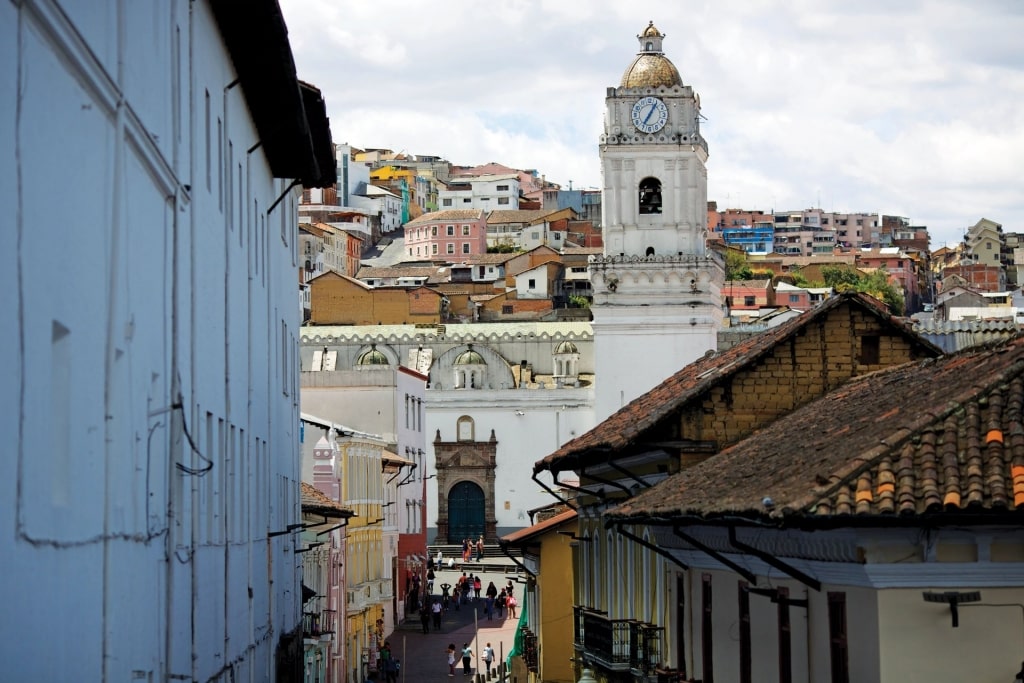
Quito, Ecuador
Lying across the equator, as its name suggests, Ecuador packs rolling countryside, snow-capped volcanoes, high mountains, and Amazonian rainforest into a surprisingly compact space. It’s also probably best known for the Galapagos Islands, scattered 600 miles off the coast. For wildlife lovers, the islands are one of the best places in South America to visit.
You’ll start your Ecuadorian adventure in Quito, the high altitude capital, 9,350 feet up in the foothills of the Andes, the towering, snow-covered peak of Cotopaxi Volcano visible on clear days.
Quito’s historic center is packed with cobbled plazas, colonial-era mansions and 17th-century churches. A short flight from here, though, is another world, the 19 volcanic islands of the Galapagos, their landscapes defined by sea caves, tumbled rocks, and jagged lava fields.

Blue-footed booby, Galapagos
The animals of the Galapagos are extraordinary, not least because the birds and animals have absolutely no fear of humans. You’ll see blue-footed boobies and prehistoric-looking iguanas, colonies of sea lions, sea turtles, and giant tortoises. On snorkel trips, you’ll swim over sharks, through shoals of yellow and purple angelfish, and alongside curious little Galapagos penguins.
Uruguay
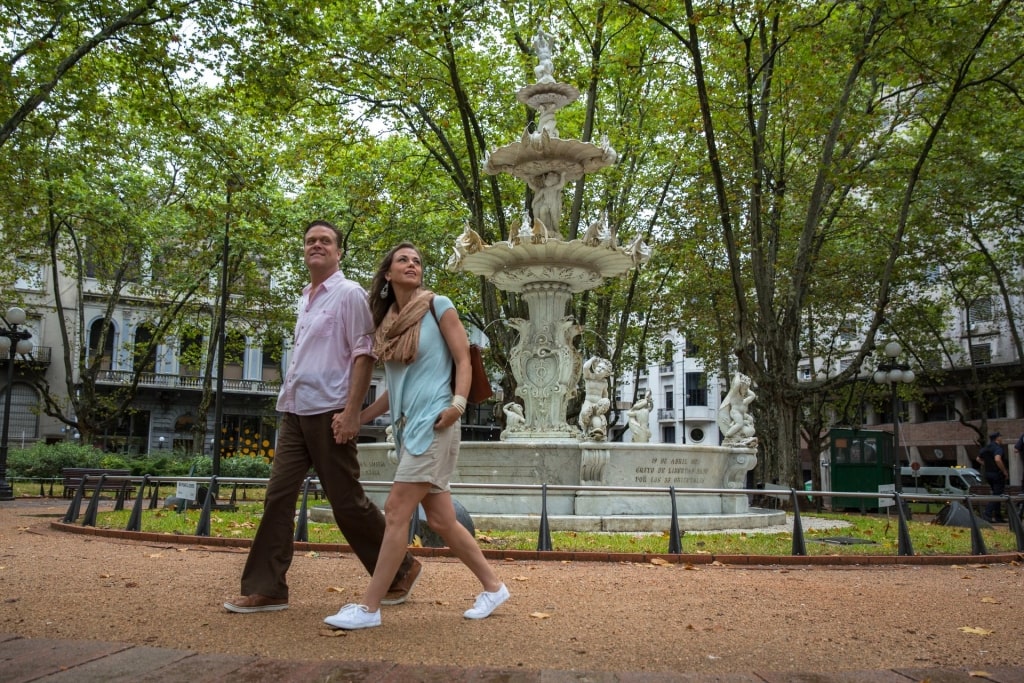
Montevideo, Uruguay
Uruguay is often overlooked in favor of its glamorous neighbors, Brazil to the north and Argentina, a two-hour boat journey across the wide mouth of the Rio de la Plata to the south. In fact, this is a beautiful country, with rolling interiors, sophisticated cities, and glorious beaches.
Montevideo, the capital, is a laid-back, compact city, Spanish and Portuguese influences clear in its architecture. Stroll the waterfront Rambla, some 10 miles of breezy boardwalk, and sample mate, the herbal tea loved by locals, traditionally served in a hollow gourd.
You’ll find fantastic markets in Montevideo, from vintage and flea markets to the legendary Mercado del Puerto, which beckons meat-eaters to try authentic Uruguayan food with its street food stalls selling all manner of sizzling meat. Take in a tango show, too; Argentina may claim to be the home of the tango, but Uruguayans would disagree.
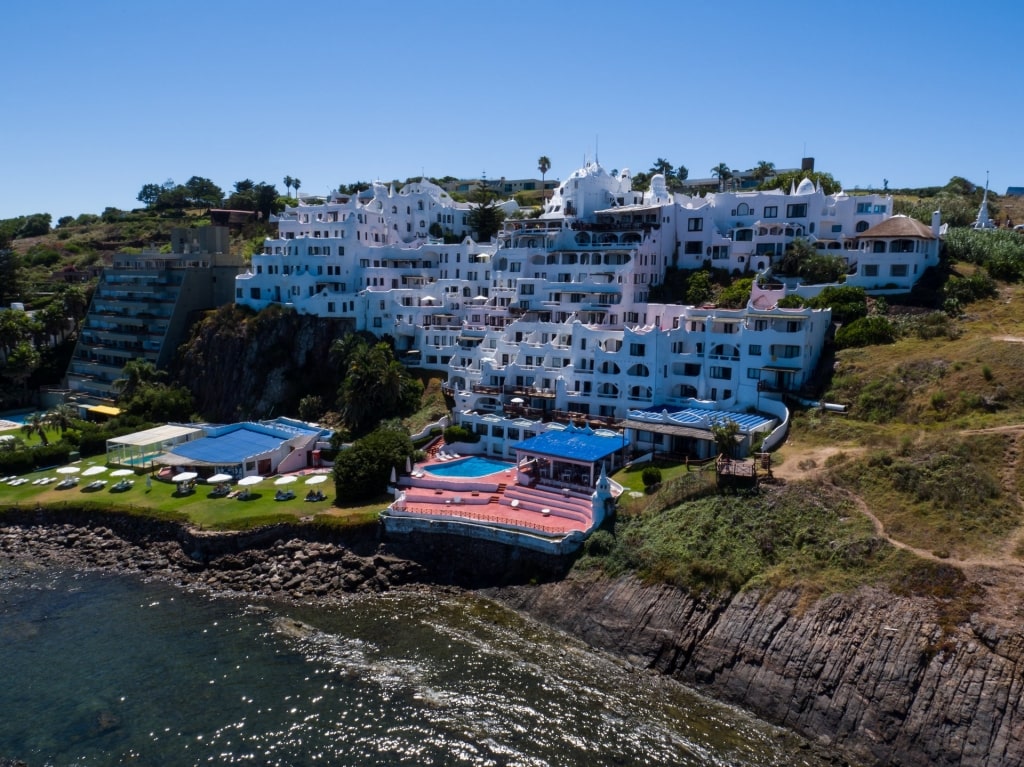
Casapueblo in Punta del Este, Uruguay
Glamorous Punta del Este, meanwhile, is Uruguay’s answer to Miami Beach, all high-rise condos, chic restaurants, designer stores, and hipster bars. No wonder well-heeled Porteños, the residents of Buenos Aires, cross the border and the Rio de la Plata for summer vacations; Punta del Este to them is as The Hamptons are to New Yorkers.
While you’re here, check out La Mano on Brava Beach, one of the best beaches in Uruguay. This enormous sculpture of a hand emerging from the sand is the work of Chilean artist Mario Irrazabál and has been a symbol of the city since 1982.
Read: An Insider’s Guide to Punta Del Este, Uruguay

La Mano in Punta del Este, Uruguay
Ready to explore this fascinating continent? A cruise is the best way to explore the best countries in South America to visit. Browse our range of South America cruises and start planning your next unforgettable vacation today.
